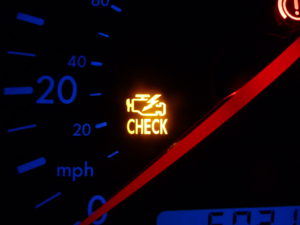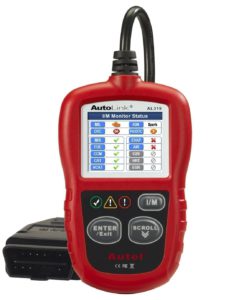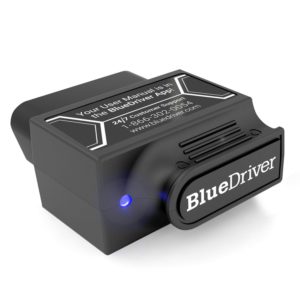
Check Engine Light is a little amber light on the dashboard. Depending on models, it can be just the word Check, Check Engine, or Service Engine Soon, or the icon of a small picture of the engine, or the combination of the icon and the word. By illuminating Check Engine Light, the vehicle computer notifies the driver there is something problem with your car. Instead of just taking your car to a mechanic, let’s see what you should do when Check Engine Light comes on.
What is Check Engine Light?
Check Engine Light is a part of the Onboard Diagnostic system. When the vehicle computer detects abnormality from one or more of various sensors. It tells you that by illuminating Check Engine Light. At the same time, the computer stores a trouble code(s), which gives you a rough idea of the problem and where to start diagnosing.
Trouble Codes
Trouble codes are sets of one alphabet and a four-digit number. The alphabet shows which system of the vehicle a problem exists, and the four-digit number shows the details of the problem. P-codes are responsible for Check Engine Light to come on. P stands for Powertrain, which is the category including engine, transmission, and associated drivetrain.
What to do when Check Engine Light comes on
Most of the cases, Check Engine Light doesn’t mean that you have to pull over and stop the engine and call a tow truck. But, you need to pay attention and have your car diagnosed as soon as possible.
Some cases, however, you need to take your car to a repair shop right away. When Check Engine Light is flashing, the engine is misfiring. You probably notice the engine shaking and losing its power.
If you don’t notice any performance change and it illuminated all of a sudden, it’s worth checking a gas cap. Sometimes, a loose gas cap can be the cause of check engine light. Some vehicles even have a separate indicator light for the purpose. Let’s say it was actually loose, and you tightened it. Check Engine Light doesn’t go off right away. It requires several drive cycles to clear the light.
Scan, get the code
Now, it’s the most critical part. Ever time you have Check Engine Light on, you should scan and retrieve the code which triggered Check Engine Light to come on so you can look up the detail of the problem from the internet or repair manuals.
Some repair shop will scan the computer for free. You may want to stop by such repair shops and have a trouble code retrieve.
Scanning the computer and retrieve the codes are not a technical job. Anyone can do it. If you want to do it for yourself, you can have your own scan tool. A pocket-size code reader costs $20 to $50, and you can store it in the glove compartment. Some other favorite items are OBD adapters. They are just adapters to be plugged into an OBD port and connected to your smartphone wirelessly. Then, you navigate with smartphone’s app. These adapters cost $20 to $100.
Conclusion
Check Engine Light doesn’t mean that you have to pull over immediately and call a tow truck. But, you need to know what code triggered the light to come on. Even if you don’t know much about a car, it’s important to retrieve the code and take a memo of it so you can look up the details or ask someone else for advice. Whether you fix the problem or ask a mechanic to fix, it’s good to have your own scan tool always in a glove compartment.
Read Also: OBD Diagnostic Codes Explained

